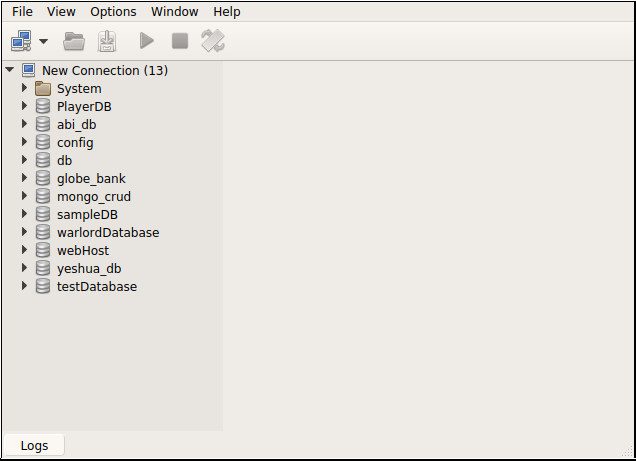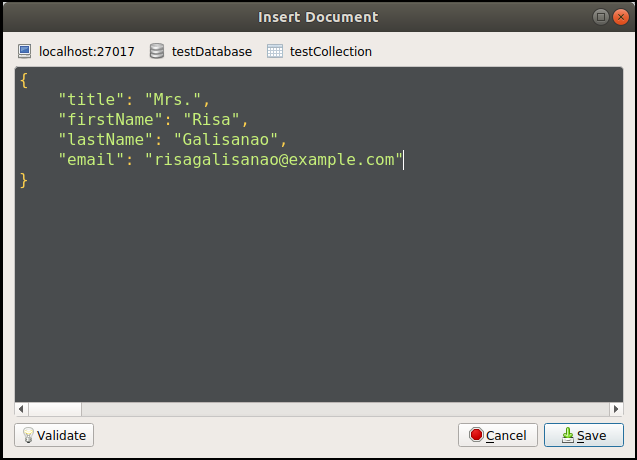

The User is solely responsible for evaluating the merits and risks associated with use of the information included as part of the content. Nothing contained herein constitutes any representation, solicitation, recommendation, promotion or advertisement on behalf of KnowledgeHut and / or its Affiliates (including but not limited to its subsidiaries, associates, employees, directors, key managerial personnel, consultants, trainers, advisors). The user of this website and/or Platform (User) should not construe any such information as legal, investment, tax, financial or any other advice. Also, take a look at the results:ĭisclaimer: The content on the website and/or Platform is for informational and educational purposes only. Place the documents in the collection now. In the next step we will insert the documents in the database: db.employee.insert() Now, create a collection “employee” with: db.createCollection("employee") If these two parameters are omitted, the find method will return all of the documents in the MongoDB collection.Ĭonsider an example of employees with the database of employee_id and employee_name and we will fetch the documents using find() method.įirst, create a database with the name “employees” with the following code: We can fetch a specific record using the Find method, which has two parameters. In Mongo DB, there are a total of six methods for retrieving specific records. In MongoDB, the find method is used to retrieve a specific document from the MongoDB collection. find() is a function that retrieves documents from a MongoDB database. The function db.collection is provided by MongoDB. When running a query, you can use criteria or conditions to retrieve specific data from the database. MongoDB queries are used to retrieve or fetch data from a MongoDB database. MongoDB can be run on a variety of platforms, including developer laptops, private clouds, and public clouds. It also offers a high level of operational flexibility because it scales well horizontally, allowing data to be spread or 'sharded' across multiple commodity servers with the ability to add more servers as needed. MongoDB is compatible with a number of popular programming languages. MongoDB is known as a 'schemaless' database because it does not impose a specific structure on documents in a collection. MongoDB is one of the most widely used open-source NoSQL document databases. Document databases, unlike RDBMSs, have a flexible schema that is defined by the contents of the documents. These are intended for storing, retrieving, and managing document-oriented data, which is frequently stored in JSON format (JavaScript Object Notation). Horizontal scaling properties of NoSQL databases allow them to store and process large amounts of data. When storing large amounts of unstructured data with changing schemas, NoSQL databases are indeed a better option than RDBMS. MongoDB's Flexible SchemaĪ NoSQL database, which stands for "not only SQL," is a way of storing and retrieving data that is different from relational databases' traditional table structures (RDBMS).

#ROBO 3T SEARCH COMMANDS HOW TO#
For more information, check out how to learn Full Stack Web development. In simple terms, it is a type of decision-making that is based on a set of criteria. Projection is an optional parameter that specifies what should be returned if the query criteria are satisfied. In simple terms, a query is what you want to search for within a collection. Query is an optional parameter that specifies the criteria for selection. There are two parameters in this formula - query and projection. MongoDB's find() method selects documents from a collection or view and returns a cursor to those documents.


 0 kommentar(er)
0 kommentar(er)
